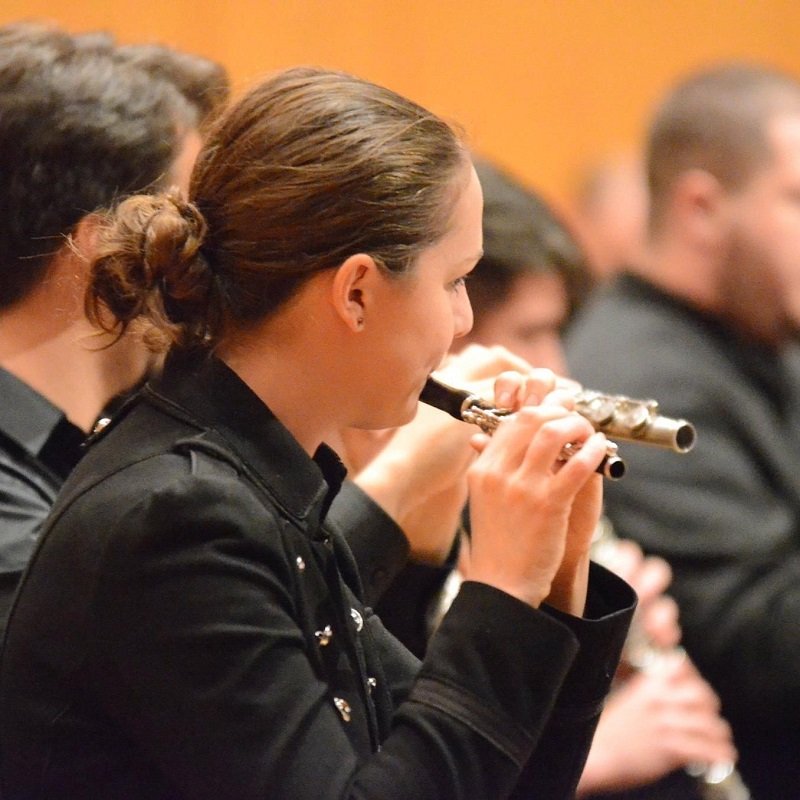Promising Piccolo

Hope Spaw, a graduate student in the Master of Music Performance program, creates a literary review to assist educators and students in solving common problems associated with learning the piccolo.
Piccolo, meaning small in Italian, is a woodwind instrument about half the size of a traditional flute. Though similar to its flute sibling, the piccolo plays one octave higher and therefore, often stands out when heard in an ensemble. Because of this, Spaw emphasizes the importance of having good intonation or pitch accuracy.
To ensure good intonation, strong breath support is needed. With weak breath support, notes on the piccolo tend to sound flat and out of tune. To avoid this, unconfident players will often shy away from the note and sound even flatter. By encouraging students to play confidently with strong breath support, intonation and pitch can improve.
Spaw began learning the piccolo her junior year of high school. She learned through trial and error with little to no instruction and applied her experience playing the flute, which she had begun learning in 6th grade. Spaw went on to play the piccolo in orchestra and wind symphony throughout her undergraduate degree at Northwestern State University of Louisiana. The more comfortable she became with piccolo, the more passionate she grew.
Now pursuing her Master’s degree at CMU, Spaw is hopeful that her literary review will help students and educators overcome the common challenges associated with learning and teaching the piccolo. Using her passion and experience as a driving force, Spaw developed a literary review aimed to help educators and students teach and learn the piccolo.
At CMU We Do Research, We Do Real World
Story by ORGS intern Hailey Nelson
August 2021